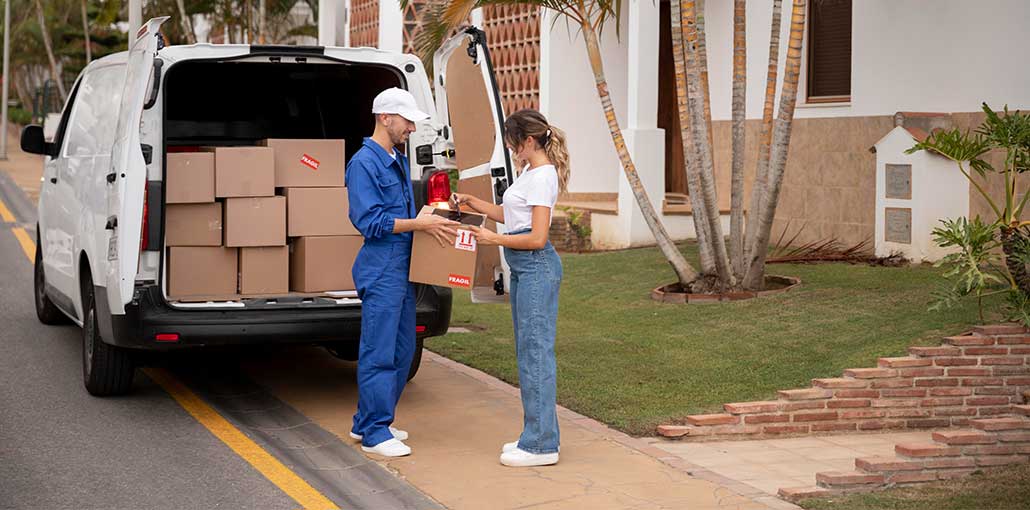When you’re shipping goods to customers, it’s imperative that they arrive undamaged. People will be frustrated and disappointed if their goods arrive damaged. You’ll need to provide replacements and you’ll even risk losing their business for good.
While you may always be able to prevent shipping damage, you can actually do a lot to keep your shipping contents from sustaining damage. It’s important to always use new boxes and shipping materials for each shipment. Measure your package contents and your boxes so you can use the right size containers for your shipments. Use appropriate padding to protect fragile items from breakage. Conduct impact testing on your boxes and packaging to determine where your weaknesses lie. Finally, label your fragile packages as such – handlers will take better care of your package if they know it’s delicate.
Use a Brand New Box for Each Shipment
No matter how much you love Mother Earth, do not reuse boxes and other shipping materials. Cardboard boxes break down easily. They aren’t really strong enough to stand up to multiple mailings. Other packaging materials might also lose enough structural integrity during their first journey that they won’t retain enough for a second journey. Make sure you’re using brand new boxes and shipping materials for each shipment.
Also read: How to Optimize Same-Day Delivery in Your Supply Chain?
Measure Your Box and Contents
You don’t want your shipping contents to fit too snugly into the shipping box or crate because there won’t be enough room left to pad the contents against impacts and shocks. You also don’t want a box that’s significantly larger than your shipping contents, because even with a lot of padding, a large box leaves more room for contents to rattle around, and rattling around contributes to shipping damage. It’s best if your shipping contents are held firmly in place throughout shipping. Measure your box and contents and choose a container that offers about two inches of space between the contents and the walls of the container.
Pad Your Box Contents Appropriately
If you’re shipping fragile items, wrap them in a layer of bubble wrap and put them into a box filled with packing peanuts, making sure to follow the size guidelines discussed above, so you have about two inches of peanuts between your shipping contents and the sides of your box. Alternatively, you can even use a custom-made shipping mold to hold your package contents in place and protect them from impacts. Consider your customer’s unboxing experience when you’re wrapping items for shipping. Too many layers of bubble wrap or too much Scotch tape could cause the customer to struggle to unwrap the item. On the other hand, a custom-made shipping mold will make your customer’s unboxing experience delightful.
Conduct Impact Testing
If you’re shipping a lot of fragile packages, it absolutely pays to conduct impact testing. Impact tests are done in a laboratory and they seek to determine how much of an impact your packaging can stand up to and where its weak spots are. To conduct these tests, you can put impact sensors inside sample packages and send them through the mail with the same carrier you’d use and on a comparable route. The impact sensors will tell you what impacts and shocks the package sustained, and you’ll see where the package has sustained damage, so you can adjust your packaging accordingly.
Also read: 10 Ways Production Tracking Software Can Prevent Supply Chain Delays
Label Your Fragile Packages
When you’re shipping something fragile, it’s usually worthwhile to mark the package as fragile. Most carriers have a special handling sticker they use for fragile packages. A fragile label may not guarantee that your package is handled carefully – some carriers just want to watch the world burn and we’ve all seen those videos of delivery drivers gleefully tossing packages over fences and from moving trucks.
Nevertheless, labeling your package as fragile will encourage most handlers to handle it more carefully. You certainly can’t expect carriers to handle your package as if it’s fragile if it’s not labeled “fragile”. Fragile items, live plants and cuttings, and live animals should all be labeled accordingly to facilitate more careful handling.
Getting your shipments to their destinations in good condition can be difficult, especially because you can’t foresee many of the shocks and impacts that packages will go through en route. Even impact testing can’t tell you when your package will fall into the clutches of a carrier who’s decided today is going to be the day when he just flings all the packages in the general direction of the houses. Package your items well enough, and it won’t even matter.










Leave a comment